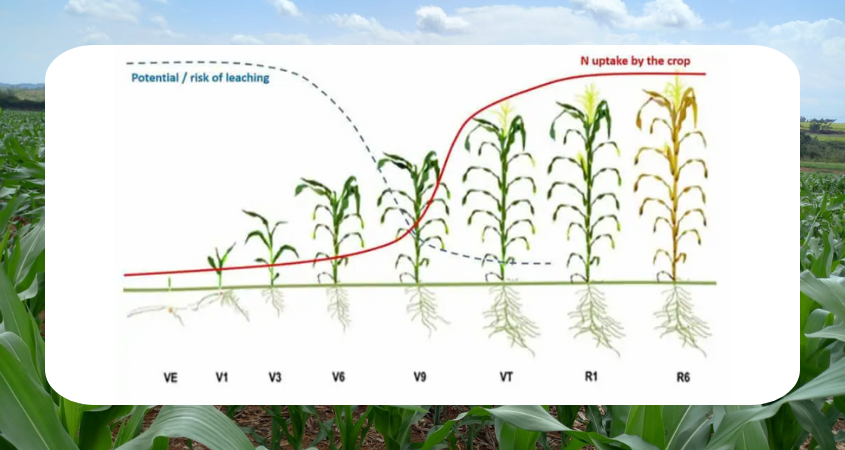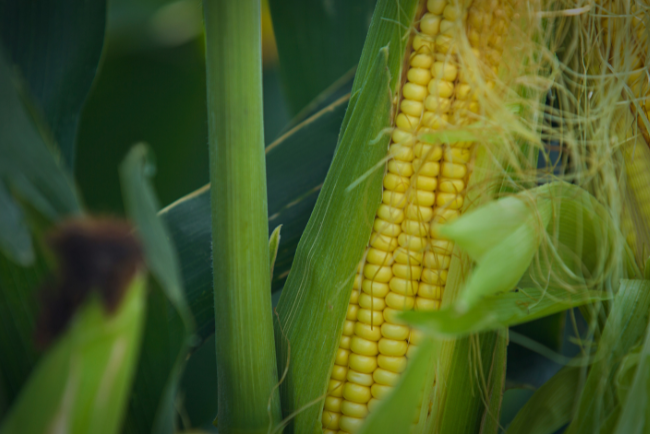
Nitrogen application at various growth stages is crucial for farmers and agronomists aiming to optimise maize crop performance. Let’s delve into the dynamics of nitrogen topdressing application and its profound effects on crop health and yield.
The crop emerges during the V1 stage, setting the stage for growth. At V3, with three leaves established, the maize plant requires 12 kg/ha of nitrogen to foster a resilient foundation. Applying nitrogen during this period is akin to providing the necessary nutrients for the plant’s initial establishment. It contributes to robust root development and sets the stage for a healthy, well-nourished maize crop.
The V6 to V10 stages mark a critical phase of rapid top growth. Nitrogen application during this period serves as the fuel for the crop’s accelerated development. During the V6 stage, the nitrogen demand increases to 25 kg/ha. Further, during V8 – V10, nitrogen uptake demand by the crop increases to 80 kg/ha. This surge in nutrient uptake fuels the crop’s growth momentum.

At the V12 stage, where the number of rows of kernels is determined, the maize crop exhibits a rapid nutrient uptake, requiring 100 kg/ha of nitrogen. As the crop transitions to the reproductive stage (R1), the nitrogen demand further rises to 140 kg/ha. Proper nutrient availability at this juncture contributes to robust cob formation and ultimately influences yield.
In the later stages, from R3 to R6, when the crop undergoes little further nitrogen uptake and reaches physiological maturity, the nitrogen demand peaks at 250 kg/ha. This critical phase ensures the completion of the maize growth cycle.
Aligning nitrogen application with maize growth stages becomes a fully strategic endeavor when grounded in the insights derived from comprehensive soil analysis. One of the critical aspects unveiled by soil testing is the baseline nitrogen level already in the soil. Knowing the initial nitrogen content provides farmers with valuable insights into the soil’s capacity to supply this essential nutrient.
This baseline serves as a reference point for tailoring nitrogen application strategies to meet the specific needs of the maize crop. Soil testing recommendations guide farmers in determining the precise amount of nitrogen to apply at each growth stage based on existing soil nitrogen levels. This prevents under-application, ensuring that the crop receives the nutrients it needs for robust development.
In conclusion, aligning nitrogen application with these maize growth stages fosters optimal crop development, resilience, and ultimately, high-yielding maize crops. This approach becomes even more beneficial when grounded in the insights derived from comprehensive soil analysis. By adhering to these insights, farmers can navigate the dynamic nutrient requirements of maize, contributing to sustainable and prosperous agriculture.
For personalised advice on maize crop nutrition or to discuss a tailored nutrient management plan using soil analysis, contact our experts at support@cropnuts.com.
Grow more with less
#agronomy #soilhealth #soilscience
Order our services and get to know how to improve your soil for better yeilds.